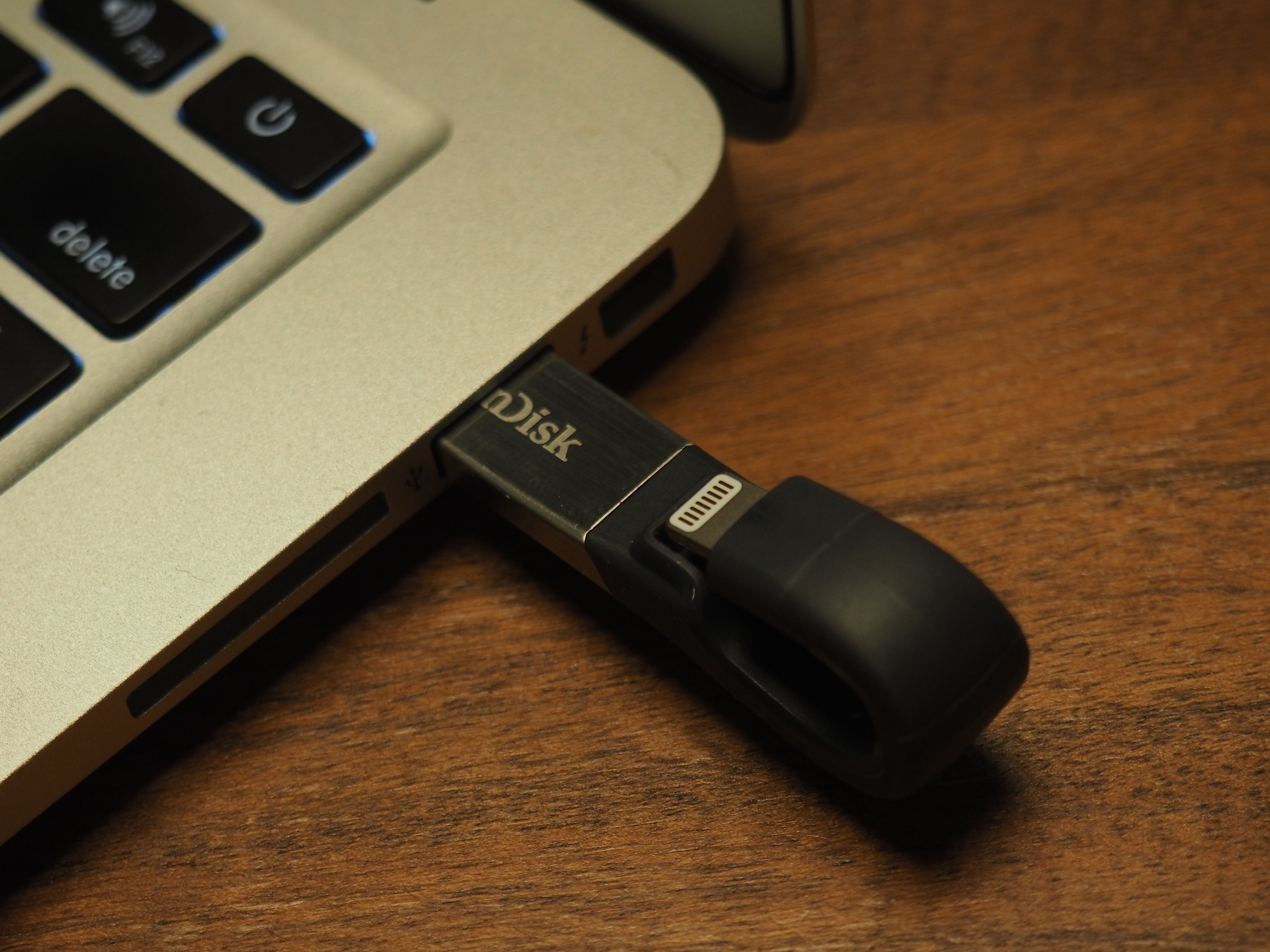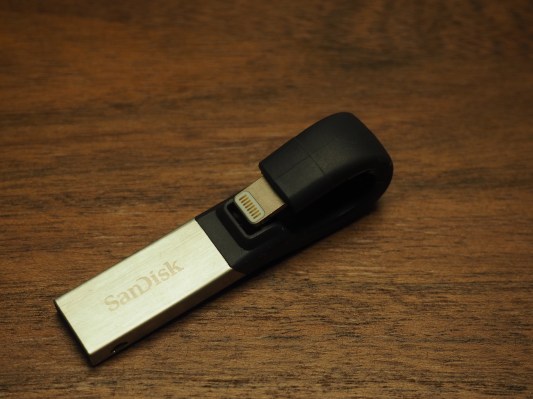The iXpand is an odd thing to behold, a strange Frankensteinian amalgam of adapters fused together and folded over for good measure. It’s another interesting concept out of SanDisk as the company attempts to stay nimble in a world of rapidly dropping storage costs and increasing reliance on cloud backups.
The iXpand is a new, slimmer take on a product released in 2014, trading in a boxy design for a more portable footprint that is half USB dongle, one-quarter Lightning connector and one quarter curved rubbery bit.
As is pretty clear from the design, the peripheral serves as a link between an iOS device and a computer, both for backing up files on an iPhone/iPad and working as expandable storage, so you can watch movies on your mobile device without having to wipe the rest of its precious 16GB of built-in storage.

The former is more of a backup of a backup. You should be backing up your stuff in the cloud and on your computer already, but the iXpand offers a little added insurance, along with the ability to quickly transfer large files that would otherwise require additional fees for cloud storage.
The latter is the more compelling case use, as anyone with a 16GB iPhone will gladly bend your ear about at length. Of course, whether or not the ability to add on expandable memory is worth $50 (16GB) to $130 (128GB) a pop is another question entirely.
Either way, it’s an important lesson in thinking long and hard about whether or not to pay for an internal storage bump for your device during checkout, or else be doomed to rely on dongles for the foreseeable future.
SanDisk has revamped the app for the latest iXpand, and the whole process is pretty much plug and play (well, plug, download the app and then play). It’ll back up photos, videos, music and other files, organizing then into neat little folders that can be accessed when plugged into an iOS device or computer.
The app can also be set to perform automatic backups every time it’s plugged in and can back up photos from Facebook, Instagram and Picasa, should you see fit to give it access.
The drive features its own video player, so videos can be played directly from the peripheral. You can record directly to it, as well, if you’d like to bypass the mobile device’s storage altogether.
One important caveat to all of this: The slimmer body is thanks, in part, to the dropping of the internal battery found on the previous generation, so the iPad/iPhone’s own built-in battery will drain that much faster if you spend a lot of time watching videos.
